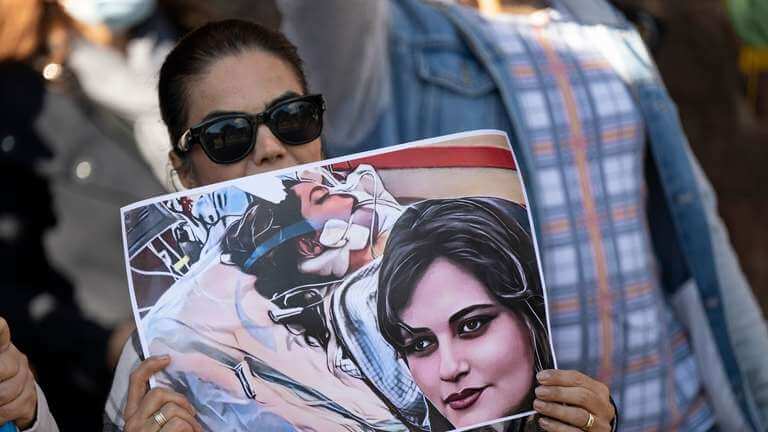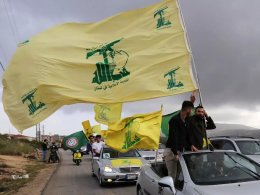Summary
1. Reason for Protests
On September 16th, an Iranian Kurdish 22-year-old woman named Mahsa Amini died in a hospital three days after being arrested by Iran’s Guidance Patrol, widely known as the “morality police,” for failing to allegedly wear her hijab properly. While the morality police say Amini had a heart attack at a station, fell on the floor, and died after two days in a coma, witnesses tell a different story. Amini’s death sparked outrage at the government as thousands of Iranians have taken to the streets across Iran. While the protests carry a message for women’s rights and justice for Amini, male and female protesters have united behind the demand for the entire removal of the current regime.
2. What’s Happening at the Protests?
Protests immediately began after Amini’s funeral on Sept. 17. These protests quickly spread across Iran to as many as 80 cities. Iranians have been gathering around public squares and many women have been partaking in the burning of hijabs and publicly cutting their hair to show their solidarity with Amini, while other protesters chant “death to the dictator” and “Women, Life, Liberty!” Social media posts, along with some activists, have called for a nationwide strike. Several university teachers, celebrities, and prominent soccer players have made posts on social media in support of the protests against Amini's death. Many protesters are younger Iranians who have not known an Iran before the Islamic Republic.
3. How has the Iranian Government Responded?
To try to slow the spread of the protests and dampen their international influence, the Iranian government has once again restricted internet access. With over 200 deaths reported, Iranian police have been ruthless in their attempts to stop the protests, riot police have met protesters with brutal force, armed with batons, tear gas, guns and metal pellets. Several videos posted on social media show security forces firing live rounds into crowds. At least 1,200 people have been arrested according to reports, but that number is assumed to be higher. In Mazandaran, a province north of Tehran, at least 450 protesters had been detained there alone. In the Kurdish province, at least 600 people have been arrested and 733 injured, according to Hengaw, a human rights organization. Hadis Najafi, a 23 year old Iranian woman was shot six times and killed in the city of Karaj by Iran security forces Wednesday. Najafi has become another symbol of the movement.
4. History of Regime Brutality in Iran
The Islamic Republic has a long history of reacting brutally to protests. In the last round of significant protests in November 2019, protests broke out against the rise in gasoline prices during which the regime shut down the internet as well, resulting in a disorganized protest and lack of media coverage due to the internet outages. During this shutdown, it is estimated that at the very least, 1,500 people were killed. Iranians are often arrested for dancing, singing, posting on social media, or wearing clothing that is not deemed ‘appropriate’ according to Sharia Law. Women are specifically targeted on the streets of Iran, in the courtroom and in their marriages, with Islamic law deeming the worth of a woman as half that of her male counterpart. In a divorce, the husband receives full custody of children and in court, the testimony of two women is needed to equal one male.
5. International Response
Solidarity protests have been held all over the globe in places like Australia, Germany, Canada, and even Syria and throughout the U.S. in New York, Washington D.C., Los Angeles, San Diego and San Francisco. In response to the brutal treatment of the protesters, United Nations Secretary-General Antonio Guterres called for "a prompt, impartial and effective investigation by an independent competent authority" into Amini's death. Social media platforms Twitter, Instagram, Facebook and TikTok have been flooded by hashtags @MahsaAmini, #IranProtests and #IranRevolution with #MahsaAmini surpassing 100 million posts on Twitter. Celebrities from Kim Kardashian to Justin Bieber, have used their platforms to spread awareness about what is going on in Iran.










